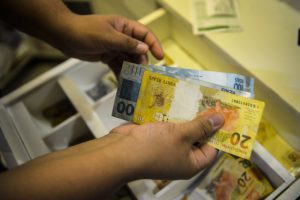BRASÍLIA/WAM
Brazil’s central bank held its interest rate steady for the second consecutive meeting. Policymakers voted unanimously to keep the benchmark rate, known as the Selic, unchanged at 10.5% on Wednesday, Bloomberg reported.
In June, Brazil’s central bank halted the interest rate cuts that had been in place for nearly a year. Recently, the government has called for a reduction in interest rates, as a weakening Brazilian currency – the real (R$) – threatens to drive inflation further above target.
Central bankers are maintaining restrictive, double-digit borrowing costs as inflation proves difficult to control in Latin America’s largest economy. Consumer price increases exceeded all forecasts in early July, amid more expensive fuel. In June, the inflation rate increased by 0.21%, and over the last 12 months, the index – known in Brazil as the Broad National Consumer Price Index (IPCA in its Portuguese abbreviation) – rose by 4.23%.
Brazil has set a fixed inflation target of 3% for 2024, with a tolerance margin of 1.5 percentage points higher or lower. Furthermore, investors remain cautious about President Luiz Inácio Lula da Silva’s spending plans, and the real has weakened the most among emerging markets this year, increasing import costs.
Brazil’s decision came hours after the Federal Reserve in the USA decided to keep borrowing costs at their highest level in more than two decades, with Chair Jerome Powell indicating that an interest-rate cut could be possible as soon as September.
On the other hand, Brazil has shown a resilient and strong labour market. Brazil’s unemployment rate for the quarter ending in June fell to 6.9% — the lowest result for a quarter since the one ending in January 2015, when it also stood at 6.9%, according to WAM’s partner Agência Brasil.
The employed population reached another record, totalling 101.8 million people. This figure is 1.6% higher than in the previous quarter and 3% higher than in the same period last year.
 The Gulf Time Newspaper One of the finest business newspapers in the UAE brought to you by our professional writers and editors.
The Gulf Time Newspaper One of the finest business newspapers in the UAE brought to you by our professional writers and editors.
